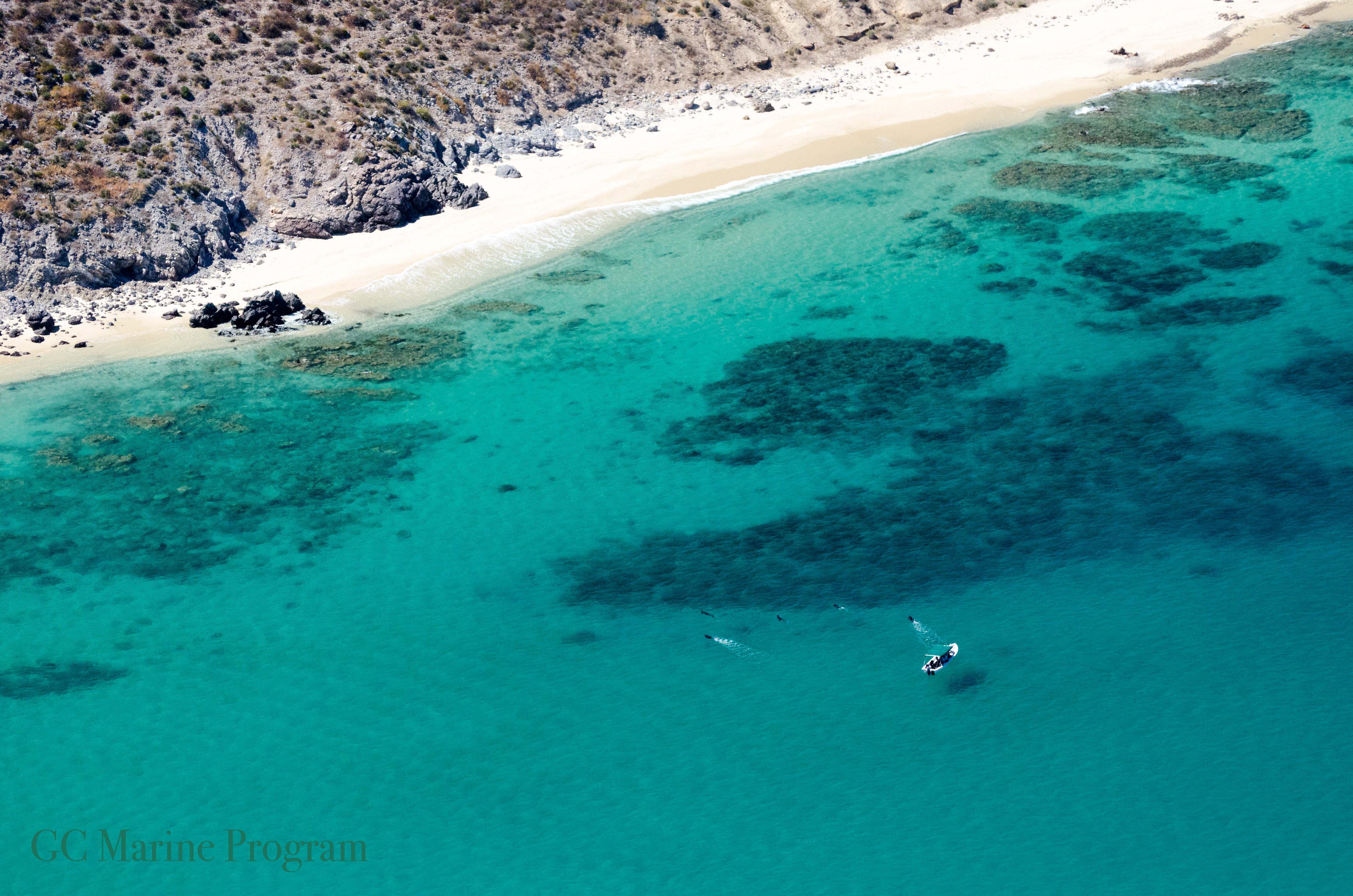Evidencing octopus and squid spawning periods through their paralarvae at Cabo Pulmo National Park

Cabo Pulmo National Park (CPNP) is a marine ecosystem where fish biomass in all trophic levels has increased after no-take status was established in 1995 (1). However, the underlying ecological processes that support the ecosystem’s recovery are still unknown. CPNP is in a transitional oceanographic region at the entrance of the Gulf of California (GC) under the influence of four different sea water masses, allowing the presence of a complex faunal assemblage.
Weekly zooplankton sampling was completed between January 2014 and November 2017 with the help of Cabo Pulmo residents. We analyzed these zooplankton samples to identify spawning periods of cephalopods based on species diversity and abundance of paralarvae, which refers to the early life stage after hatching. This is the first zooplankton time series in the Pacific Ocean to infer the spawning periods of octopuses and squids based on paralarvae (2).
Five species, eighth morphotypes and one species complex from six families were identified. Most of these paralarvae are of tropical biogeographic affinity associated to anomalous warm sea surface temperature recorded during 2014–2017 compared with 2002–2018 climatology. This sea warming event was associated to a regional marine heatwave recorded during 2014 and to the equatorial El Niño 2015–2016 event. A consistent seasonal or interannual spawning pattern was not evident because of the natural low abundance of the cephalopod paralarva stage. However, the most abundant and frequent squid and octopus taxa appear to have extended seasonal spawning strategies with sporadic reproductive peaks.
Major findings
The first surprising discovery was the presence of Helicocranchia pfefferi paralarvae because their adults typically distribute between 200–600 m depths. This is the first report of H. pfefferi for the GC. The second striking discovery was that virtually all paralarvae (93%) collected were recently hatched as evidenced by the species-specific hatching size.
Paralarvae of two argonaut species (Argonauta nouryi and Argonauta argo) and the squid complex of Sthenoteuthis oualaniensis-Dosidicus gigas were the most abundant and frequent specimens collected. Other studies show these species typically spawn in the southern GC. Abraliopsis sp. 1 and Abraliopsis sp. 2 squids, most likely Abraliopsis falco and Abraliopsis affinis, were also frequent. Our findings imply that at least 12 cephalopod taxa reproduce in CPNP, meaning this area is a suitable spawning habitat for benthic and pelagic cephalopods, including some with socio-economic value like Argonauta nouryi, common octopus Octopus hubbsorum, and the jumbo squid, Dosidicus gigas.
Conclusions:
The paralarval taxonomic composition at CPNP was a mix of communities from oceanic habitats of the southern Gulf of California and Baja California’s southwest coast (3,4). The narrow (<1.4 km) continental shelf and the deep submarine canyon south of CPNP allow a cross-shelf exchange of planktonic oceanic fauna (5). The tropical-subtropical paralarvae composition observed at CPNP during 2014–2017 was associated with the seasonal ocean’s circulation pattern and the result of two anomalous warming events: a regional heat wave in 2014 and the 2015-2016 El Niño event. CPNP harbors a diverse octopus and squid fauna, including species of commercial interest and paralarvae of adult species rarely observed in shallow ecosystems. At least 12 cephalopod species spawn here, promoting recruitment inside and outside of the reserve’s boundary, showing that conservation efforts benefit biodiversity beyond the popular reefs.
Authors:
Elizabeth Martínez-Soler*, Jaime Gómez-Gutiérrez*, Roxana De Silva-Dávila*, Eduardo González-Rodríguez**, Octavio Aburto-Oropeza***
Contact Information:
DOI:
Affiliations:
* Instituto Politécnico Nacional, Centro Interdisciplinario de Ciencias Marinas, La Paz, Baja California Sur, Mexico; **Centro de Investigación Científica y de Educación Superior de Ensenada, Unidad La Paz, Mexico; ***Marine Biology Research Division, Scripps Institute of Oceanography, California, USA.
Acknowledgements:
We thank the Leona M. and Harry B. Helmsley Charitable Trust, Brad Erisman, Carlos Sánchez, Juan José Cota Nieto, Ismael Mascareñas Osorio, Carlos Godínez, and most specially to David Castro Arvizu, his family, and the community of Cabo Pulmo for their unconditional support during the development of this project.
How to cite this story:
Elizabeth Martínez-Soler, Jaime Gómez-Gutiérrez, Roxana De Silva-Dávila, Eduardo González-Rodríguez, Octavio Aburto-Oropeza (2020) Evidencing octopus and squid spawning periods through their paralarvae at Cabo Pulmo National Park. DataMares. InteractiveResource. http://dx.doi.org/10.13022/XXXXXX
References
2. Martínez-Soler E, Gómez-Gutiérrez J, de Silva-Dávila R, González-Rodríguez E, Aburto-Oropeza O (2021) Cephalopod paralarval species richness, abundance and size structure during the 2014–2017 anomalous warm period in the southern Gulf of California. Journal of Plankton Research, 43(2): 224–243. doi: 10.1093/plankt/fbab010.
3. De Silva-Dávila R, Franco-Gordo MC, Hochberg FG, Godínez-Domínguez E, Avendaño-Ibarra R, Gómez-Gutiérrez J, Robinson CJ (2015) Cephalopod paralarval assemblages in the Gulf of California during 2004-2007. Marine Ecology Progress Series 520: 123–141. doi: 10.3354/meps11074.
4. García-Guillén R, De Silva-Dávila R, Avendaño-Ibarra R (2018) Seasonal changes in paralarval cephalopod communities on the southwest coast of Baja California Sur (spring and autumn 2003). Ciencias Marinas 44: 107–123. doi: 10.7773/cm. v44i2.2761.
5. Ahern LAM, Gómez-Gutiérrez J, Aburto-Oropeza O, Saldierna-Martínez RJ, Johnson AF, Harada A. E, Erisman B, Castro-Arvizú DI, Sánchez-Uvera AR, Burton RS (2018) Using molecular identification of ichthyoplankton to monitor spawning activity in a subtropical no-take Marine Reserve. Marine Ecology Progress Series 592: 159–179. doi: 10.3354/meps12446.

